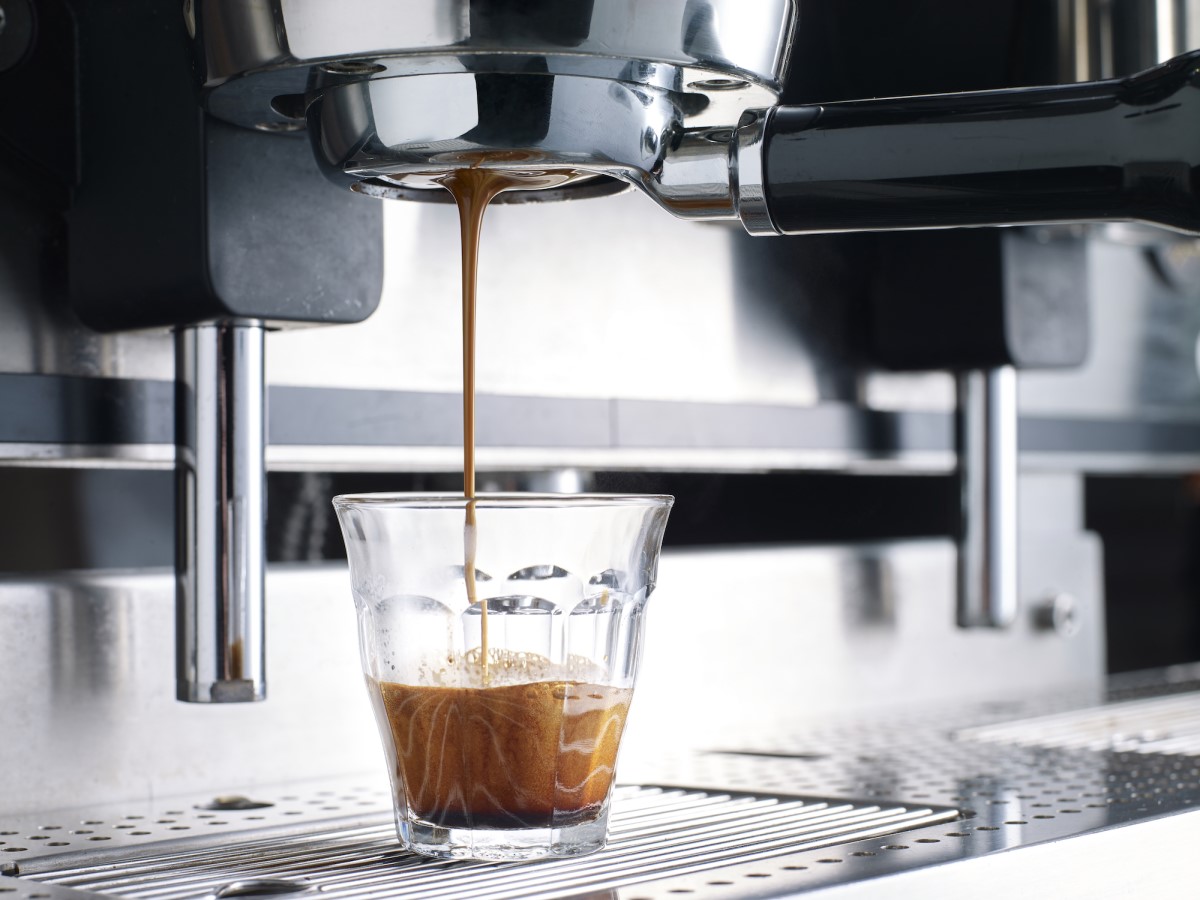Coffee extraction | Creating the perfect pour

As published in BeanScene Magazine
Quality raw materials are the natural starting point, so make sure to source your coffee from a specialty supplier who can provide top quality, expertly roasted beans. A medium roast is ideal for espresso. A gourmet coffee supplier should be able to provide advice on blends to suit your taste preferences.
Getting the grind right is a crucial step in the process and is best achieved using a burr grinder. Coffee is hydroscopic, which means it absorbs water, so adjust according to your environment. The aim is to produce a uniform particle size that results in an extraction time of 25 to 30 seconds and yields 25ml of liquid. A grind that’s too fine means the water can’t get through, but if it’s too coarse, the water will flow through too quickly. Always grind as you go, otherwise freshness will be compromised.
Dosing
Dosing the coffee is simply transferring the coffee from the grinder to the basket at the end of the group handle, or portafilter. It is important to make sure you have the correct volume in the basket. Cafes work in the range of 18 to 20 grams per basket.
A guide is to dose the coffee into the basket until it is slightly mounded, although there are different theories around. Some say overdosing the grounds is best, while others claim that underdosing is better, because it allows the coffee to expand. Whichever method you choose, keep in mind that you are after an extraction that delivers 25ml in around 25 to 30 seconds, so experiment to find the right volume for optimum balance of flavours.
Tamping
After dosing the coffee, it is time for tamping. The aim is to pack the grounds into the basket in a way where the hot water from the espresso machine will flow through uniformly. This provides the best opportunity for the water to strip the oils from the grounds as it flows through. Pre-collapsing is the first part of tamping and is done to settle the grounds. Firmly tap the bottom of the basket on a hard surface several times (at home, mind any countertops susceptible to chipping!) After tapping, clear the excess grounds by running your finger or coffee scraper across the top. Next, take the cylindrical metal press, or tamper, and apply pressure in order to pack in the grounds. The ground coffee in the basket should be level and smooth and free of gaps so that the water moves through the “cake” evenly without any channelling, as that can result in an uneven extraction.
Extraction
Once the grounds are firmly and evenly packed, you are ready to go! Attach the group handle to the group head, place your cup down and immediately engage the pump on the machine. As the espresso machine sends pressurised water into the grounds and the extraction begins, watch closely.
Observe the extraction, and pay close attention to the colour. There are three parts to extraction – when the pour first starts, it should come out dark and rich in colour. As the coffee continues to pour and thicken, the colour will change to a deep golden, honeycomb colour and then finally to a light or pale yellow (commonly called blonding). At the point where the extraction starts to pale, you should be turning off the pump, because this is the point where you have extracted all the coffee essences from the grounds. The blonding part of the extraction is the over extracted portion and will result in a burnt and bitter flavour.
If you are just starting out, try using a timer to ascertain whether you are falling within the guidelines of 25 to 30 seconds for 25ml of liquid per nine to 10 grams of coffee. You may need to go back and adjust your grind – it is worth pointing out the importance of a good home grinder because with a standard home machine you may not be able to control the water temperature (which should sit at approximately 94C, plus or minus two degrees depending on the coffee blend or roast). With a good quality grinder, however, you will still be able to control extraction through adjusting the grind.
A word about crema. There was a time when the mere existence of a crema was the sign of a good coffee. Times have changed with increasingly discerning coffee consumers in Australia and this is no longer the case. A good coffee will have a distinctly dark honeycomb coloured crema, with the absence of any paling or white spots.
Creating the perfect espresso is a lifetime art, so enjoy the practice and experimentation that is an essential part of the coffee lovers’ experience. Part of becoming a great barista is becoming an expert taster, so drink your coffee black and learn the difference between a good espresso and a great one. Watch the barista at your local cafe closely and you will soon get a better idea of what you can achieve at home. Making the perfect cup of coffee is a lifetime journey, so get tasting and creating and enjoy!
Coffee extraction is a learnt art - Essence of Espresso 100 Series can teach you how. Enquire about availability today.